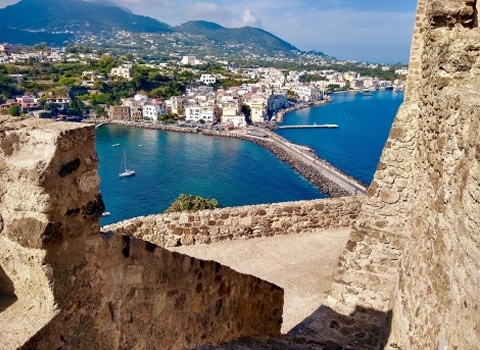Explore Puglia on foot: a paradise for nature lovers
There’s something in the air down in Puglia—maybe the scent of wild herbs on the wind, or the light that hits the olive groves just so. For anyone chasing the best treks in Puglia, it’s not about big statements. It’s the slow climb through old shepherd trails, the silence broken by cicadas, the dry stone walls that seem to hum their own stories.
This corner of Italy, tucked far into the southeast, isn’t all about the sea. Though the coastline stretches wide and blue, it’s the mix that gets under the skin. A patchwork of shaded woods, limestone ridges, empty plateaus. Every footstep feels slightly different. And the land—quiet, a little raw—keeps shifting as you go.
Hiking here isn’t just about landscapes. It folds in centuries of history. Ruins appear without warning. Paths curve past crumbling masserie, through fields where time seems slower. Some routes hug the cliffs, others veer inland, under the watch of wind-bent pines. It’s not a dramatic show. But it stays with you.
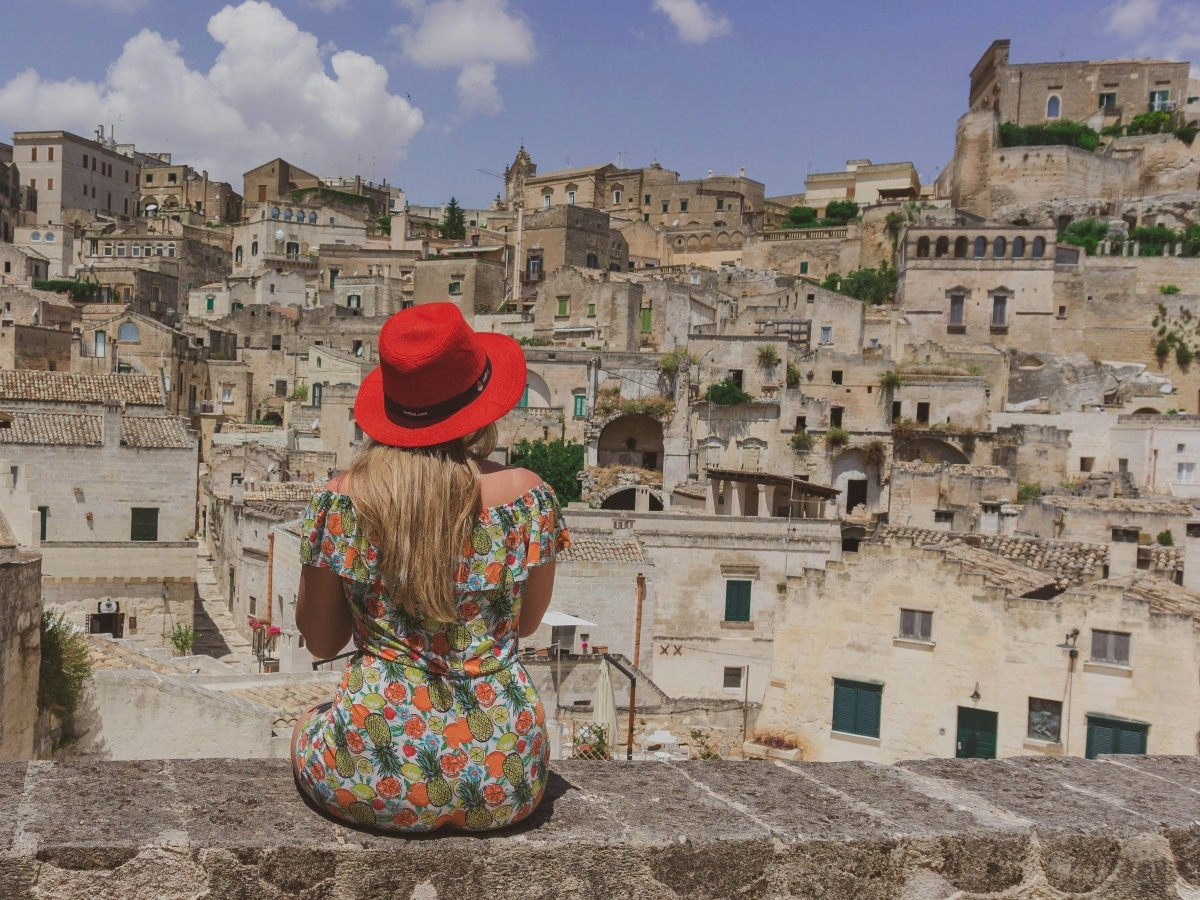
Why choose Puglia for your hikes?
A natural and cultural jewel
Puglia doesn’t shout. It reveals itself slowly, step by step. Out in the fields, ancient olive trees stand like twisted sculptures, and the trails, dusty or shaded, stretch between cliffs that fall away into sea the color of glass. Every so often, a village appears—whitewashed houses, uneven cobbles, silence pierced only by the sound of footsteps or a radio in the distance.
This region holds more than landscapes. There’s a rhythm, still intact, shaped by centuries of tradition. Some walks brush past the conical roofs of the trulli in Alberobello, others edge toward the stone-carved churches near Matera. Technically across the border, yes—but part of the journey for many who follow the trails this far.
A destination for all levels
Not every hiker is chasing altitude. Some are just looking to walk. Puglia suits both. You might find yourself strolling lazily along a coastal track, or breathing harder as the terrain starts to climb. Whatever the path, there’s always something unexpected—a scent, a sudden view, a quiet pause.
The best hikes in Puglia
Gargano National Park
Up in the north, the Gargano peninsula feels like a world apart. The land here juts into the Adriatic, steep and rugged, wrapped in forest and scrub. It’s wilder than most of the region, less tamed. Maybe that’s the draw.
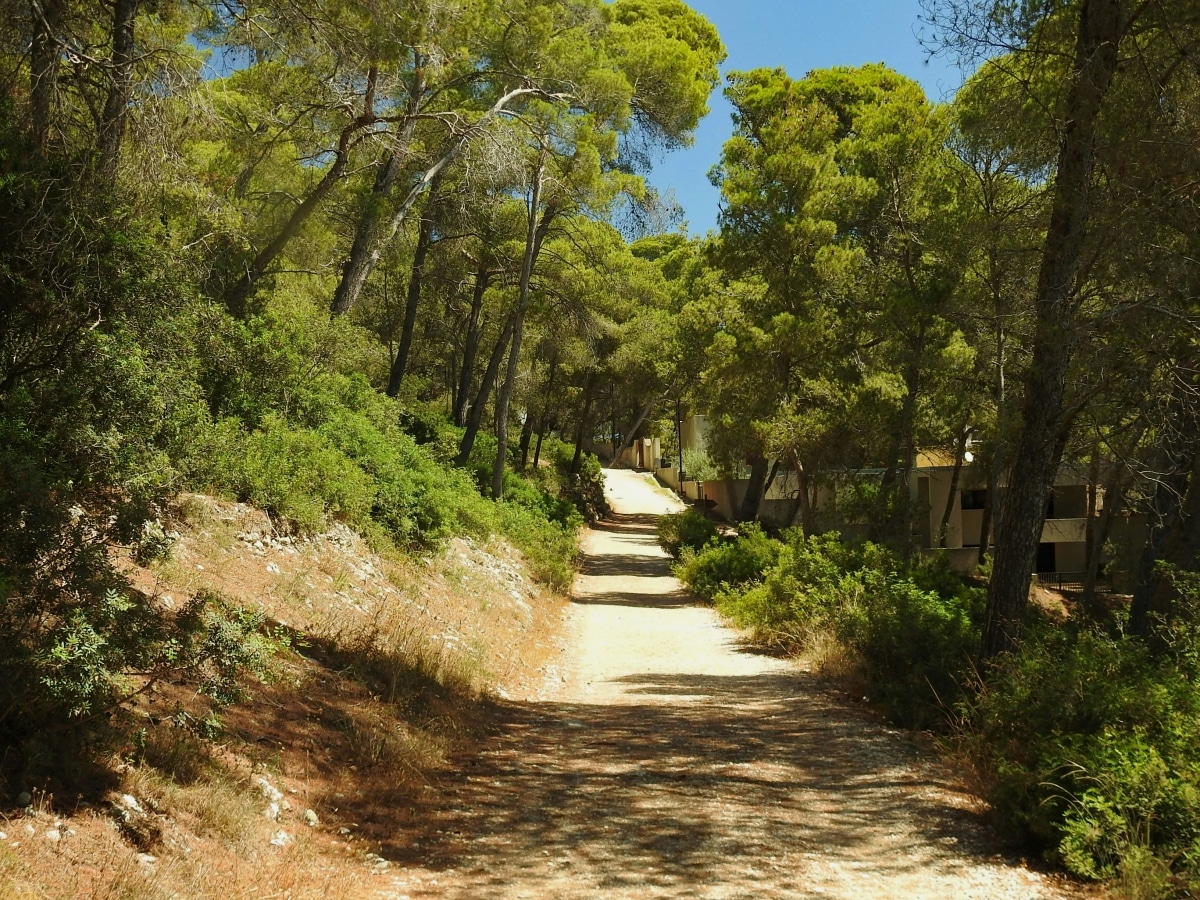
Forêta Umbra
Tucked deep in Gargano lies the Forêta Umbra—its name, “dark forest”, feels fitting. The light filters in slowly through dense branches, and the ground stays damp under layers of fern. Old oaks, chestnuts, silence except for birdsong. If you walk long enough, you might cross paths with deer or spot a fox darting through the trees. The forest shifts as you move. Some paths feel carved by footsteps alone. Others open suddenly onto views that stretch far out over the hills. It’s easy to lose time here.
- Difficulty: Easy to moderate, depending on the trails chosen.
- Distance: Routes from 3 to 15 km.
- Duration: 1 to 5 hours.
- Best season: Spring and autumn to avoid the summer heat.
- Tip: Ideal for families with children thanks to its accessible paths.
Coastal hikes
To feel the full stretch of the Adriatic, try following the line between Vieste and Peschici. The trail—about 12 km—curves above the sea, narrow in places, edged by pines and low shrubs. The smell of salt hangs in the air. Sometimes the path disappears into a patch of rock, only to reappear around a bend, opening suddenly onto a hidden bay or a lookout where you just stop and stare.
This route, one of the best treks in Puglia for those drawn to the coastline, calls for steady footing and a bit of endurance. But the views—raw and shifting—reward the effort.
- Difficulty: Moderate (modest difference in altitude, but sometimes narrow paths).
- Distance: About 12 km.
- Duration: 4 to 6 hours.
- Best season: From May to October.
- Tip: Bring a picnic for a break with a breathtaking view of the sea.
Polignano a Mare cliffs
Clinging to the edge of white limestone cliffs, Polignano a Mare almost looks sculpted into place. The trail here doesn’t take long, but it lingers in memory. It runs close to the sea, skirting natural arches, diving into grottos carved by time and tide. There’s something cinematic about the light, the way it dances on the water, then flickers up into the caves.
Along the way, small coves open up—just enough space for a towel, a swim. It’s a route for walkers, not trekkers. But the sense of motion, of edge and drop and sea spray, carries its own kind of energy.
- Difficulty: Easy to moderate, suitable for walkers of all levels.
- Distance: 5 to 8 km, depending on the route chosen.
- Duration: 2 to 3 hours.
- Best season: End of the day, ideally at sunset for magnificent views.
- Tip: Perfect for a family walk, with several access points to the beaches for a swim.
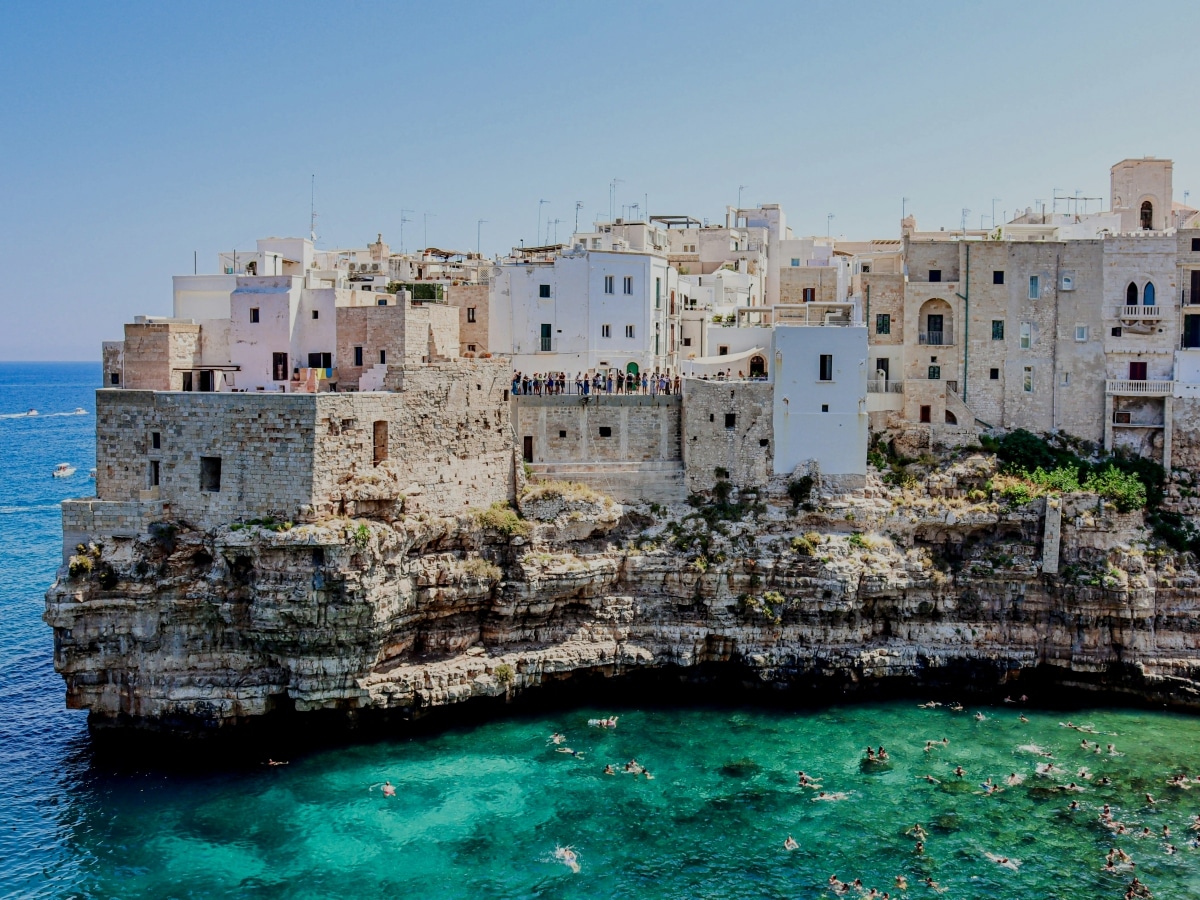
Alta Murgia: an adventure in the steppe
The Alta Murgia National Park stretches out like a forgotten land—quiet, windswept, wide open. Nothing theatrical, but something happens as you walk. The silence, the dry light, the scattered rocks shaped by time. Sinkholes open like sudden mouths in the earth, and limestone scars the surface in ways that feel ancient, almost uneasy.
Foxes dart across the path. Birds of prey hover far above—kestrels mostly, small but commanding. In spring, wildflowers make a surprise appearance, softening the harshness of the terrain. Come autumn, everything turns to gold and dust. No two visits look the same. This place doesn’t seek attention. But it lingers.
- Difficulty: Moderate (wide plateaus with some gentle climbs).
- Distance: Between 10 and 20 km, depending on the circuits.
- Duration: 3 to 6 hours.
- Best season: Spring to enjoy the wild flowers.
- Tip: Perfect for geology and history enthusiasts, with the possibility of visiting archaeological sites along the way.
Alberobello trulli nearby
The trulli around Alberobello don’t need an introduction, but seeing them up close—scattered through olive groves, tucked beside vineyard tracks—feels different. Less postcard, more real. These dry-stone dwellings, conical and strange, once gave shelter to shepherds. Now they mark the landscape like forgotten punctuation.
Several hiking routes connect these old structures. One trail between Alberobello and Locorotondo meanders through farmland where everything still moves at the pace of seasons. There’s no rush. The path isn’t challenging, but it gives space to notice things. Old walls, the sound of tools in the distance, maybe a cat asleep on a doorstep.
- Difficulty: Easy to moderate, with well-marked paths.
- Distance: 8 to 12 km depending on the route.
- Duration: 3 to 5 hours.
- Best season: Spring and autumn for pleasant temperatures.
- Tip: Combine the hike with a guided tour of a trullo to better understand their origin and function.
Torre Guaceto: between sea and nature reserve
Some places don’t try hard. Torre Guaceto is like that. A stretch of coast where the sand doesn’t glitter and the dunes aren’t tall—but the quiet is real. Flat paths lead through brush and breeze, skirting shallow lagoons, past birds barely bothered by human presence. Flamingos sometimes. Or egrets standing still like forgotten statues.
Snorkeling here is possible too, if the sea is calm. Not flashy, but revealing. Schools of small fish, beds of seagrass. Occasionally, a sea turtle if luck plays along. This isn’t a hike for challenge—it’s more of a slow drift through a preserved patch of coastline, where everything seems to breathe in its own rhythm.
- Difficulty: Easy (flat paths, suitable for children).
- Distance: 6 to 10 km.
- Duration: 2 to 4 hours.
- Best season: All year round, but avoid the hottest days of summer.
To discover even more magical places like Torre Guaceto, hire Puglia tour guides who will enrich your experience.
Salento: an immersion between beaches and olive groves
Down in the heel of Italy, Salento holds something different. Maybe it’s the way the sea and the soil seem to speak the same language. Wide beaches, windblown and often empty, brush up against villages that haven’t tried to modernize much. Gallipoli, Lecce—famous, yes, but still slow-paced, still holding onto the rhythms of another time.
Here, the trails cut through fields of olive trees. Some, centuries old, gnarled and massive. Others young, but already shaped by the sun. There’s always a smell—salt, wild herbs, warm stone. And then, suddenly, a dance. Or a table. Locals playing pizzica on a terrace, food served without flourish but full of flavor. The walks may seem simple, but they reveal a living culture carried not by museums, but by voices, gestures, the sound of footsteps through dry earth.
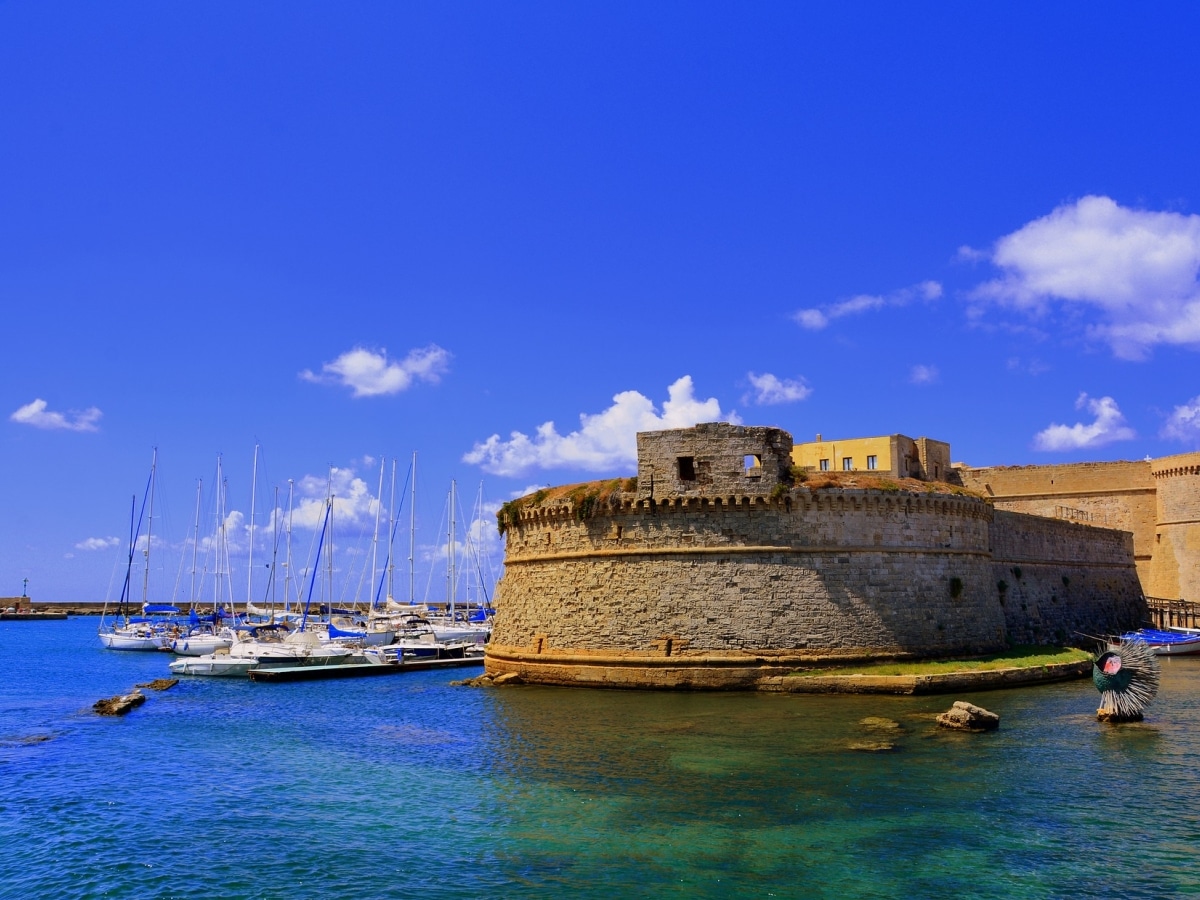
Coastal paths
Between Santa Maria di Leuca and Otranto, the land meets the sea with a kind of wild grace. The trail runs close to the edge—sometimes a proper path, sometimes more of a suggestion—and the views keep shifting. The point where the Adriatic blends into the Ionian isn’t marked by anything obvious, yet you feel it.
Along the way, there’s Cala dell’Acquaviva—a hidden cove barely wide enough for a towel. Punta Palascìa stands watch nearby, its lighthouse catching the first light to touch Italy each morning. Castro appears suddenly, huddled on a cliff, quiet except for the clink of cutlery from a trattoria balcony. Between swims and stops, the trail offers more than just sea views. It gives you space.
- Difficulty: Moderate to difficult (rocky sections).
- Distance: 12 to 18 km.
- Duration: 4 to 7 hours.
- Best season: April to June, September to October.
- Tip: Bring sturdy shoes and plenty of water.
The century-old olive groves
Further inland, the air grows heavier with the scent of earth and oil. Olive trees here don’t stand in neat lines—they twist, hollowed by time, some older than memory itself. Some say a few were planted when emperors still ruled from Rome.
Dry stone walls run alongside the trails, sometimes crumbling, always present. They mark the passage of generations, more than just boundaries. Small presses still exist in nearby villages. If you’re lucky, one might be open, the door half-ajar. A visit to a local masseria adds more to the walk—oil tastings, slow talk, the feel of stone floors under your feet.
- Difficulty: Easy (ideal for families).
- Distance: 5 to 8 km.
- Duration: 1 to 3 hours.
- Best season: All year round.
Monte Sant'Angelo: a spiritual hike
The road to Monte Sant’Angelo doesn’t just climb—it weaves through something older. Forests of beech and oak lean in, offering pauses where light filters through in silver streaks. At times, the path steepens. It’s not punishing, but it makes you feel your own weight. Which, maybe, is the point.
At the top, the view opens wide—across the Gargano, toward the sea, over the folds of green and stone. And then there’s the sanctuary. Half hidden, carved into the mountain itself. Inside, silence echoes. Frescoes cling to the walls, and the crypt feels like the heart of something ancient. Pilgrims have walked this way for centuries. And even without faith, it’s hard not to feel something stir.
- Difficulty: Moderate (some steep climbs).
- Distance: 8 km round trip.
- Duration: 3 to 4 hours.
- Best season: Spring and fall.
- Tip: Plan to visit the sanctuary to complete your experience and delve into the mystical history of the place.

